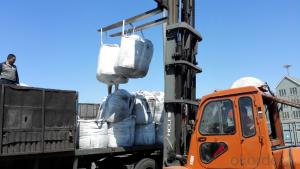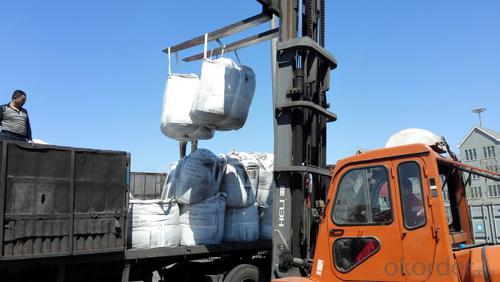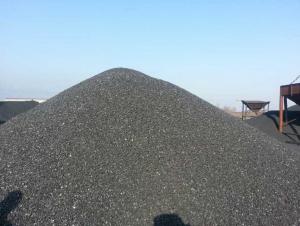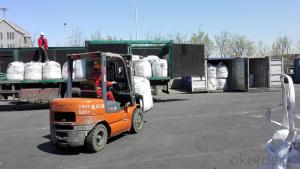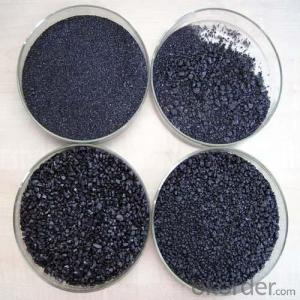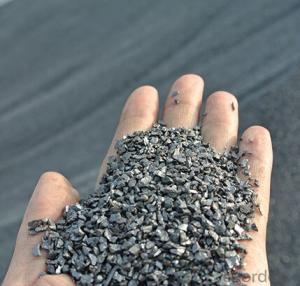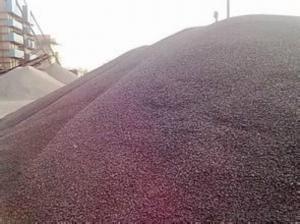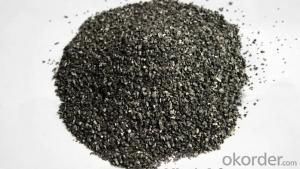FC88% Recarburizer with Ash 4% for steel making
- Loading Port:
- Tianjin
- Payment Terms:
- TT OR LC
- Min Order Qty:
- 20.1
- Supply Capability:
- 1001 m.t./month
OKorder Service Pledge
OKorder Financial Service
You Might Also Like
Introduction:
Calcined anthracite can be called carbon additive, carbon raiser, recarburizer, injection coke, charging coke, gas calcined anthracite.It is playing more and more important role in the industry
Best quality Anthracite as raw materials through high temperature calcined at over 2000℃ by the DC electric calciner with results in eliminating the moisture and volatile matter from Anthracite efficiently, improving the density and the electric conductivity and strengthening the mechanical strength and anti-oxidation. It has good characteristics with low ash, low resistivity, low sulphur, high carbon and high density. It is the best material for high quality carbon products. It is used as carbon additive in steel industry or fuel.
Features:
G-High Calcined Anthracite is produced when Anthracite is calcined under the temperature of 1240°C in vertical shaft furnaces. G-High Calcined Anthracite is mainly used in electric steel ovens, water filtering, rust removal in shipbuilding and production of carbon material.
Specifications:
F.C.% | 95MIN | 94MIN | 93MIN | 92MIN | 90MIN | 85MIN | 84MIN |
ASH % | 4MAX | 5MAX | 6 MAX | 6.5MAX | 8.5MAX | 12MAX | 13MAX |
V.M.% | 1 MAX | 1MAX | 1.0MAX | 1.5MAX | 1.5MAX | 3 MAX | 3 MAX |
SULFUR % | 0.3MAX | 0.3MAX | 0.3MAX | 0.35MAX | 0.35MAX | 0.5MAX | 0.5MAX |
MOISTURE % | 0.5MAX | 0.5MAX | 0.5MAX | 0.5MAX | 0.5MAX | 1MAX | 1MAX |
Pictures
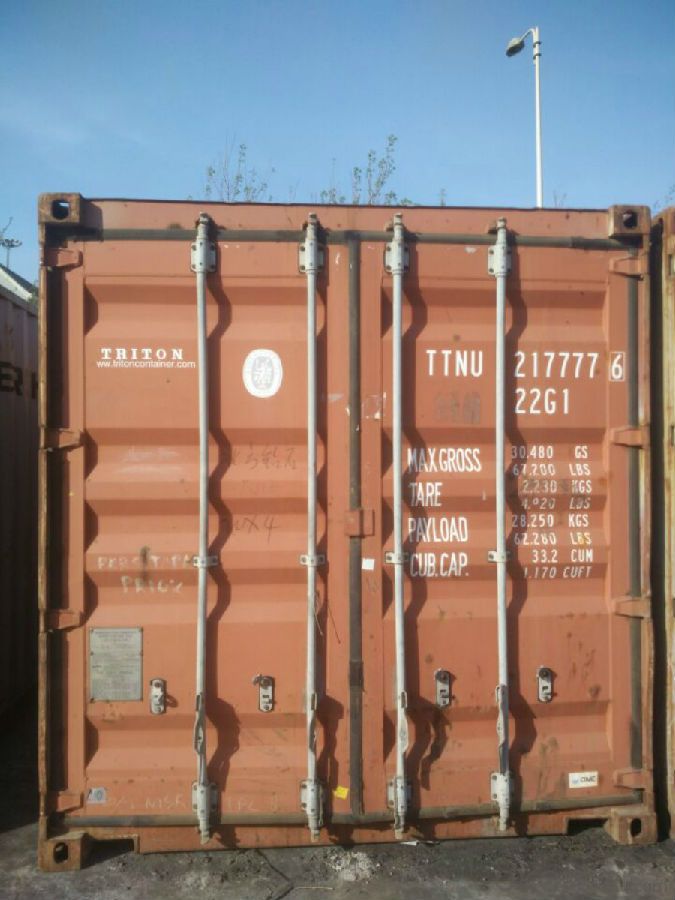
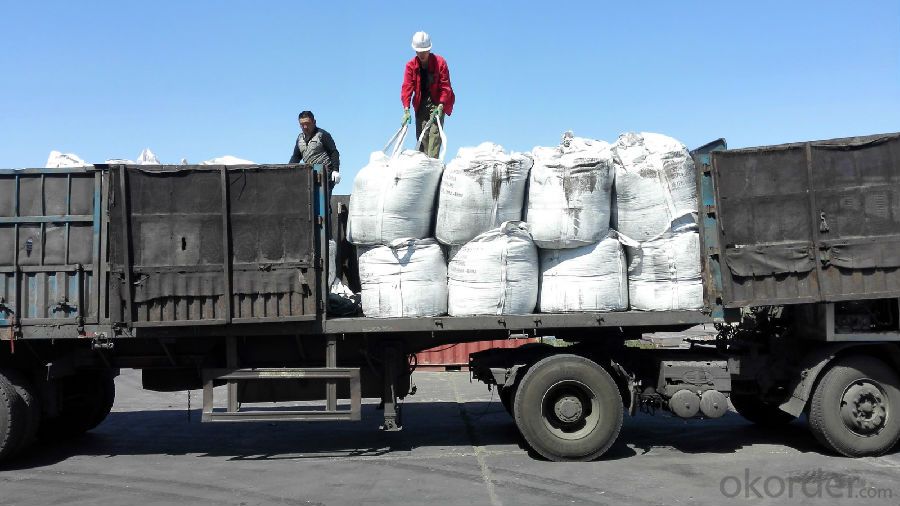
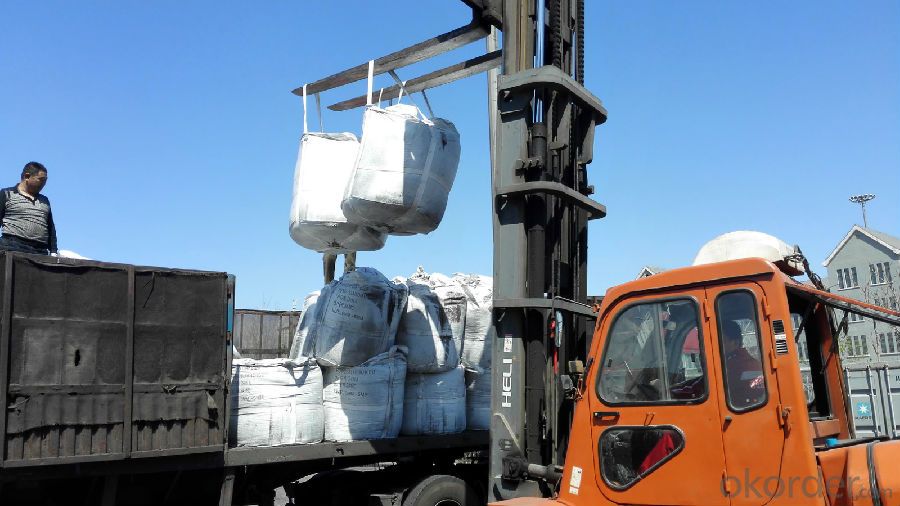
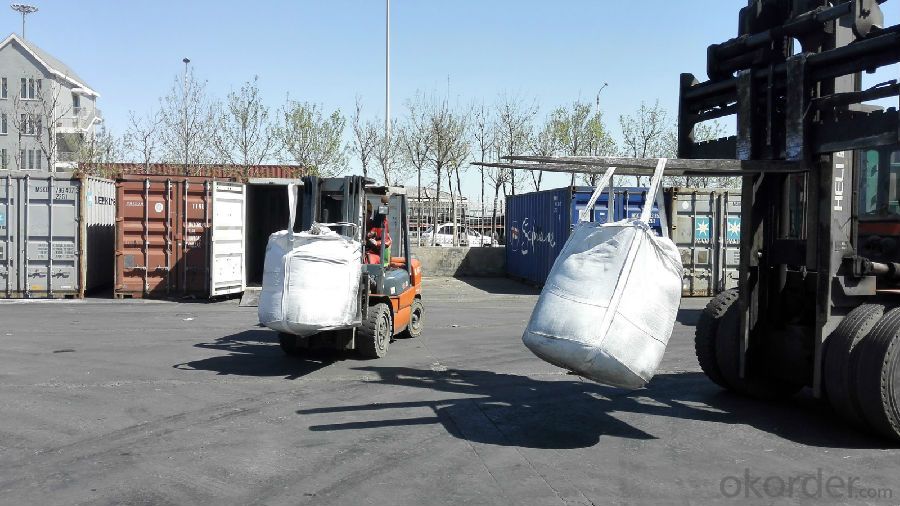
FAQ:
Packing:
(1). Waterproof jumbo bags: 800kgs~1100kgs/ bag according to different grain sizes;
(2). Waterproof PP woven bags / Paper bags: 5kg / 7.5kg / 12.5kg / 20kg / 25kg / 30kg / 50kg small bags;
(3). Small bags into jumbo bags: waterproof PP woven bags / paper bags in 800kg ~1100kg jumbo bags.
Payment terms
20% down payment and 80% against copy of B/L.
Workable LC at sight,
- Q: What is carbon neutral?
- Carbon neutral refers to achieving a state where the net carbon emissions released into the atmosphere are balanced out by an equivalent amount of carbon removal or offsetting. This is typically achieved by reducing greenhouse gas emissions and investing in projects that remove carbon dioxide from the atmosphere, resulting in no net increase of carbon dioxide levels.
- Q: Why is carbon content of stainless steel low?
- This is because the main alloying elements of martensite chromium stainless steel is iron, chromium and carbon, such as Cr is greater than 13%, there is no gamma phase, such as single-phase alloy ferritic alloy, in any heat treatment system does not produce martensite, therefore must join the forming elements of austenite, Fe-Cr two alloy, to expand, C and N are effective elements, C, N elements adding alloy allows higher CR content. Chromium is one of the most important essential elements in martensitic chromium stainless steels, except chromium. In fact, martensitic chromium stainless steel is a kind of iron, chromium and carbon three element alloy C.However, the corrosion resistance of martensitic stainless steel mainly depends on the content of chromium, but the carbon in the steel due to the formation of stable chromium carbide with chromium, but also indirectly affect the corrosion resistance of steel. Therefore, in 13%Cr steel, the lower carbon content, the higher corrosion resistance. In 1Cr13, 2Cr13, 3Cr13 and 4Cr13 four kinds of steel, the corrosion resistance and strength of the order is just the opposite. In addition, carbon has an effect on the mechanical properties of stainless steel matrix.
- Q: We need to make a poster... Of the 27 essential elements of the human body, I am in charge of carbon! I haven't found it for a long time! Who can help me? Urgent!!!!!!Can you find something very specific? Thank you
- The three to four billion years of life symphony, whose theme is the evolution of carbon chemistry.
- Q: What is the role of carbon in the formation of coal, oil, and natural gas?
- Carbon plays a crucial role in the formation of coal, oil, and natural gas. These fossil fuels are primarily composed of carbon, along with varying amounts of hydrogen, sulfur, nitrogen, and other elements. The formation of these fuels begins with the accumulation of organic matter, such as dead plants and marine organisms, in environments with limited oxygen. Over millions of years, the organic matter is subjected to intense heat and pressure, causing a process known as carbonization. During carbonization, the carbon in the organic matter undergoes chemical changes, transforming it into solid, liquid, or gaseous hydrocarbon compounds. The specific conditions under which carbonization occurs determine the type of fossil fuel that will be formed. In the case of coal, the organic matter is primarily land-based plant material. Under high pressure and temperature, carbonization converts this plant material into solid coal. The longer and more intense the carbonization process, the higher the carbon content in the resulting coal. Different types of coal, such as lignite, bituminous, and anthracite, have varying carbon content and energy density. Oil, on the other hand, is formed from marine organisms like plankton and algae. As these organisms die, they sink to the bottom of oceans or lakes and are gradually buried under sediment layers. Over time, the heat and pressure cause carbonization, transforming the organic matter into a liquid hydrocarbon mixture known as crude oil. This oil can then be further processed into various petroleum products. Natural gas is primarily composed of methane (CH4) and is formed in similar conditions as oil. However, the carbonization process occurs at higher temperatures and pressures, causing the organic matter to break down into gaseous hydrocarbon compounds. Natural gas can be found alongside oil deposits or trapped in underground rock formations, such as shale or sandstone. Therefore, carbon is the fundamental building block of coal, oil, and natural gas. Its presence in organic matter, combined with the right conditions of heat, pressure, and time, leads to the formation of these valuable energy resources that play a significant role in powering our modern world.
- Q: How does carbon occur in nature?
- Carbon occurs in nature in various forms and is one of the most abundant elements on Earth. It is found in the atmosphere, in the Earth's crust, and in living organisms. In the atmosphere, carbon exists primarily as carbon dioxide (CO2), which is produced through natural processes such as respiration, volcanic activity, and the decay of organic matter. This CO2 is then absorbed by plants during photosynthesis to produce energy and release oxygen. Carbon is also present in other greenhouse gases like methane (CH4), which is produced by natural processes such as the decomposition of organic matter in wetlands and the digestive processes of certain animals. In the Earth's crust, carbon is found in various minerals such as limestone, dolomite, and graphite. These minerals are formed through the deposition and accumulation of marine organisms, such as shells and skeletons of marine organisms, over millions of years. Carbon is also a key component of fossil fuels, including coal, oil, and natural gas, which are formed from the remains of ancient plants and animals buried and subjected to high pressure and temperature over time. Furthermore, carbon is an essential element for all living organisms and is the basis of organic chemistry. It is the key component of all organic matter, including carbohydrates, proteins, lipids, and nucleic acids, which form the building blocks of life. Carbon cycles through various biological processes, such as photosynthesis, respiration, and decomposition, allowing it to be continually recycled within ecosystems. Overall, carbon occurs naturally in the environment in different forms and plays a crucial role in the Earth's climate system, geological processes, and the sustenance of life.
- Q: What is carbon black dye?
- Derived from carbon black, a fine black powder resulting from the incomplete combustion of hydrocarbon materials, carbon black dye is a highly sought-after dye. It finds extensive usage as a pigment and dye across various industries, such as ink, paint, rubber, plastics, and textiles. Renowned for its intense black hue and exceptional lightfastness, carbon black dye resists fading when exposed to sunlight or other light sources. Moreover, this dye's strong coloring properties enhance the depth and darkness of other colors, rendering them more visually appealing and vibrant. Furthermore, carbon black dye boasts remarkable heat stability, chemical resistance, and electrical conductivity, making it versatile for a wide array of applications.
- Q: What are the effects of carbon dioxide on ocean acidity?
- Ocean acidity is significantly impacted by carbon dioxide (CO2), resulting in a phenomenon known as ocean acidification. When humans release CO2 into the atmosphere through activities like burning fossil fuels, the oceans absorb it. This absorption triggers chemical reactions that form carbonic acid, which lowers the pH of seawater. The increased concentration of carbonic acid in the oceans disrupts the delicate balance of carbonate ions, which are necessary for the formation of calcium carbonate. Numerous marine organisms, including coral reefs, shellfish, and plankton, rely on calcium carbonate to construct their shells and skeletons. As the ocean becomes more acidic, the concentration of carbonate ions decreases, making it increasingly challenging for these organisms to create and maintain their protective structures. Ocean acidification poses a significant threat to marine ecosystems and biodiversity. Coral reefs, for example, are particularly vulnerable to acidification. As acidity increases, corals struggle to build and maintain their calcium carbonate structures, resulting in bleaching and eventual death of the reefs. The loss of coral reefs has severe consequences for the countless species that depend on them for food, shelter, and reproduction. Additionally, other marine organisms such as shellfish and plankton are also affected by ocean acidification. Shellfish, including oysters, clams, and mussels, rely on calcium carbonate for their shells. As acidity rises, the availability of carbonate ions decreases, making it harder for these organisms to construct their protective shells. This can lead to reduced populations of shellfish, impacting not only the organisms themselves but also the industries and communities that rely on them economically and culturally. Plankton, the foundation of the marine food web, are also susceptible to the effects of increased ocean acidity. Many plankton species possess calcium carbonate structures that provide buoyancy and protection. As acidity rises, these structures weaken, making it more difficult for plankton to survive and reproduce. This disruption in the plankton community can have far-reaching consequences for the entire marine food chain, impacting fish, marine mammals, and ultimately, humans who rely on seafood as a primary source of protein. In conclusion, the impact of carbon dioxide on ocean acidity is significant and concerning. Ocean acidification jeopardizes the health and stability of marine ecosystems, affecting crucial organisms like coral reefs, shellfish, and plankton. Understanding and addressing this issue are crucial for the long-term health of our oceans and the countless species that depend on them.
- Q: How is carbon used in the steel industry?
- Carbon is a crucial element in the steel industry as it plays a vital role in the production of steel. The addition of carbon to iron is the fundamental process that transforms iron into steel. By combining iron with a controlled amount of carbon, the steel industry is able to achieve the desired properties such as hardness, strength, and durability. Carbon is primarily used as an alloying element in steelmaking, where it enhances the mechanical properties of steel. The carbon content in steel can vary from as low as 0.1% to as high as 2%, depending on the desired steel grade and application. Low carbon steel, with a carbon content of less than 0.3%, is commonly used for applications that require good formability and weldability, such as automotive bodies and construction materials. On the other hand, high carbon steel, with a carbon content of above 0.6%, is used for applications that require high strength and hardness, such as cutting tools, drill bits, and springs. The presence of carbon in these applications allows for increased wear resistance and improved mechanical properties. Carbon also plays a crucial role in the heat treatment process of steel. Through a process called carburizing, steel can be heated in the presence of carbon-rich gases or solids to increase the carbon content at the surface. This results in a hardened surface layer with improved wear resistance, while maintaining a tough and ductile core. Furthermore, carbon is essential for the steel industry's use of electric arc furnaces (EAFs) in steelmaking. EAFs utilize electricity to melt scrap steel and other raw materials. During this process, carbon is introduced to reduce the oxides present in the raw materials, allowing for efficient steel production. In summary, carbon is widely used in the steel industry to achieve the desired properties of steel such as hardness, strength, and durability. Its addition during the steelmaking process and through heat treatment enhances the mechanical properties of steel, allowing for a wide range of applications in various industries.
- Q: Carbon steel with carbon steel, carbon steel yuan yuan is the same? The trouble to know the answer urgently
- Nor can we see carbon steel and carbon circle are called carbon circle. If the carbon steel and carbon circle are called carbon that are circular steel.
- Q: other parameters are figured out, the difference is only in the carbon and carbon is not very clear, just know that they are winding mode is the opposite, there are two kinds of most printers can be used, what is the difference between the performance of them? Two can use the printer in the selection of the best carbon or carbon? Why? Please cite several models as an example.Please answer in your own words. Don't factor,
- In fact, to teach you a simple way to distinguish between internal and external carbon, carbon, label paper dip ribbon, with black on the outside of the outer side is carbon, carbon is in inside, no performance difference, now generally used is the most carbon, such as the machine is to use carbon is better, because the wound is not the same, sometimes loose.SATO machine with carbon is better, and the CITIZEN printer inside and outside carbon can be used, in addition to machine limitations, not what the difference is too big, the quality of internal and external carbon ribbon is the same.
Send your message to us
FC88% Recarburizer with Ash 4% for steel making
- Loading Port:
- Tianjin
- Payment Terms:
- TT OR LC
- Min Order Qty:
- 20.1
- Supply Capability:
- 1001 m.t./month
OKorder Service Pledge
OKorder Financial Service
Similar products
Hot products
Hot Searches
